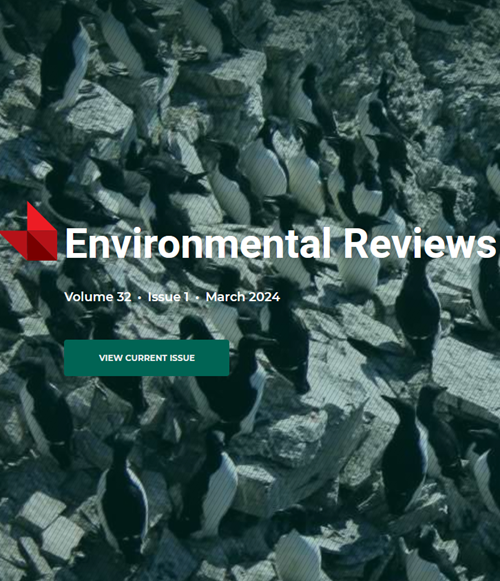环境影响评估中的野生动物健康:我们是否缺少一个关键指标?
IF 5.1
3区 环境科学与生态学
Q2 ENVIRONMENTAL SCIENCES
引用次数: 2
摘要
环境影响评估(EIA)旨在评估未来项目对一个地区的环境、人类健康和经济潜力的预期影响。它们是促进可持续发展和减少大型工业项目对生物多样性影响的重要工具。准确评估项目对野生动物种群的影响具有多种生态、文化和经济意义。然而,评估通常使用间接指标,如野生动物栖息地数量和质量变化的预测影响和/或非特定野生动物种群指标(例如相对丰度)的预测变化。近几十年来,对野生动物健康的解释已经从经典的“疾病存在/不存在”的二分状态转变为一个更广泛的概念,整合了生物、社会和环境健康决定因素的相互作用。我们试图确定野生动物健康指标如何在环境影响评估过程中使用,并提出一个框架来描述、量化和监测未来环境影响评估中的野生动物健康。首先,我们对加拿大三个司法管辖区的环境影响评估文件进行了有针对性的审查,以确定这些文件中“野生动物健康”的相关性和使用情况。然后,我们回顾了案例研究和研究实例,以了解与保护生物学相关的不同背景下的野生动物健康,并提出了将野生动物健康纳入环境影响评估基线监测和缓解过程的框架。我们的目标审查表明,虽然在环境影响评价的主要和具体目标中经常引用野生动物健康和相关术语,但在环境影响评价和相关过程中很少对其进行跟踪和量化。我们确定了可用于有效地将野生动物健康纳入环境影响评估的方法,包括特定环境的野生动物健康指标、参与式流行病学、基于社区的抽样和当地生态知识。我们举例说明了野生动物健康可以促进将社区、土著政府和地方生态知识纳入项目和开发的评估过程以及纳入野生动物的共同管理实践的案例研究。我们的工作强调了将野生动物健康纳入环境影响评估程序的迫切需要,以便对潜在的环境影响提供更直接和全面的视角,并改善早期实施缓解措施的机会。本文章由计算机程序翻译,如有差异,请以英文原文为准。
Wildlife health in environmental impact assessments: are we missing a key metric?
Environmental Impact Assessments (EIA) aim to assess the predicted effects of future projects on the environment, human health, and the economic potential of a region. They are an instrumental tool for sustainable development and to reduce the impact of large-scale industrial projects on biodiversity. The accurate assessment of the effects of projects on wildlife populations has a variety of ecological, cultural, and economic implications. However, assessments are commonly done using indirect indicators like the predicted impact of changes in the quantity and quality of wildlife habitat and/or predicted changes in non-specific wildlife population metrics (e.g., relative abundance). In recent decades, the interpretation of wildlife health has moved from the classical dichotomous state of “disease presence/absence’’ to a broader concept that integrates the interaction of biological, social and environmental health determinants. We sought to determine how wildlife health metrics are used in EIA processes and propose a framework to characterize, quantify and monitor wildlife health in future EIAs. First, we performed a targeted review of EIAs documents from three jurisdictions in Canada to characterize the relevance and use of ‘wildlife health’ in these documents. Then, we reviewed case studies and research examples to understand wildlife health in different contexts associated with conservation biology to propose a framework to incorporate wildlife health into baseline monitoring and mitigation processes in EIAs. Our targeted review illustrates that while wildlife health and related terminology is often invoked in the main and specific objectives of EIAs, it is rarely tracked and quantified in EIAs and related processes. We identified approaches that can be used to effectively incorporate wildlife health in EIAs, including context-specific wildlife health metrics, participatory epidemiology, community-based sampling, and Local Ecological Knowledge. We illustrate case studies where wildlife health can facilitate the inclusion of communities, Indigenous governments, and Local Ecological Knowledge into the evaluation process of projects and developments and into co-management practices of wildlife. Our work highlights the critical need to move towards incorporating wildlife health into EIA processes to provide a more direct and holistic perspective on the potential environmental impacts and improve the opportunities for early implementation of mitigation measurements.
求助全文
通过发布文献求助,成功后即可免费获取论文全文。
去求助
来源期刊

Environmental Reviews
环境科学-环境科学
自引率
3.50%
发文量
45
期刊介绍:
Published since 1993, Environmental Reviews is a quarterly journal that presents authoritative literature reviews on a wide range of environmental science and associated environmental studies topics, with emphasis on the effects on and response of both natural and manmade ecosystems to anthropogenic stress. The authorship and scope are international, with critical literature reviews submitted and invited on such topics as sustainability, water supply management, climate change, harvesting impacts, acid rain, pesticide use, lake acidification, air and marine pollution, oil and gas development, biological control, food chain biomagnification, rehabilitation of polluted aquatic systems, erosion, forestry, bio-indicators of environmental stress, conservation of biodiversity, and many other environmental issues.
 求助内容:
求助内容: 应助结果提醒方式:
应助结果提醒方式:


